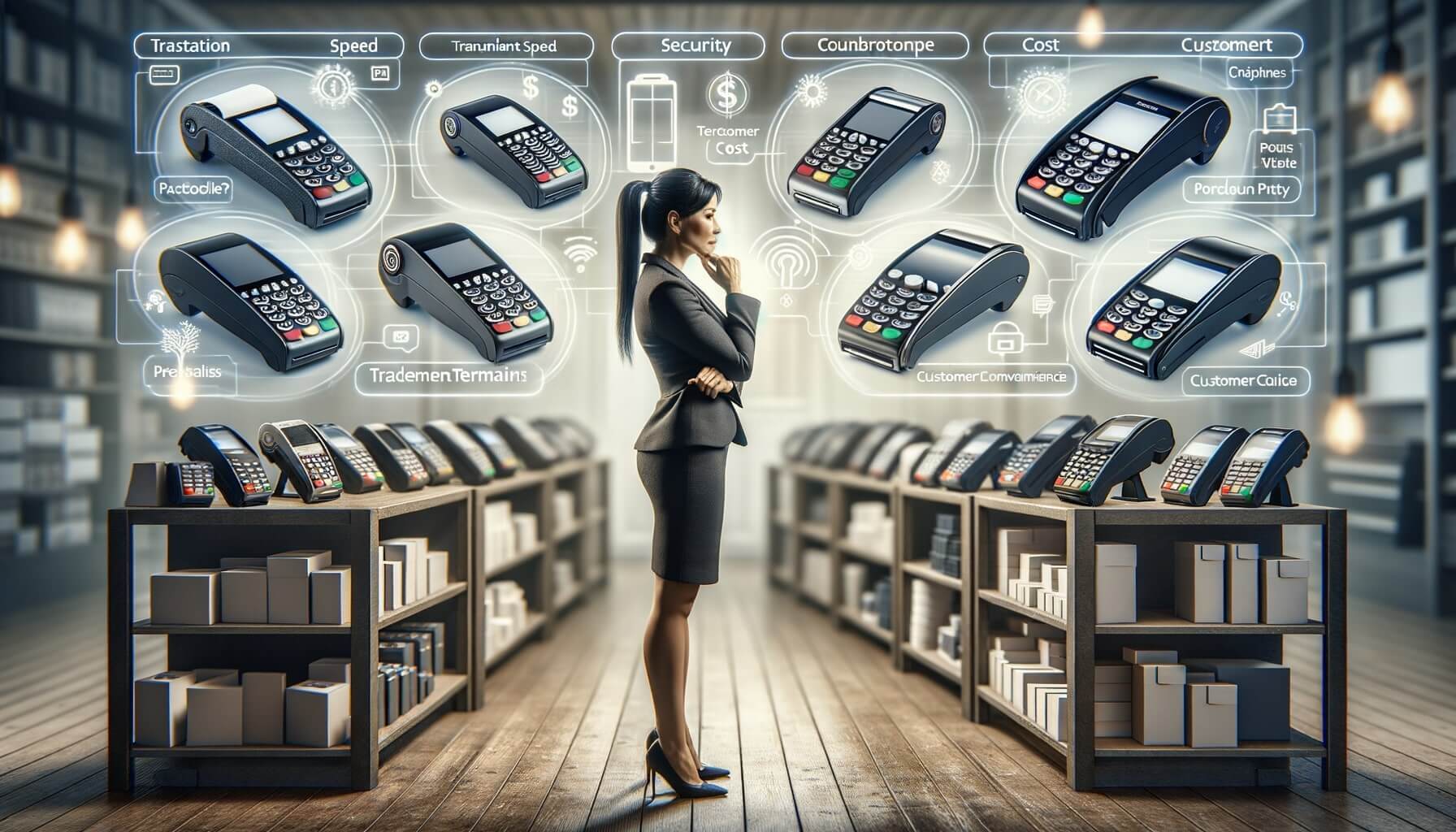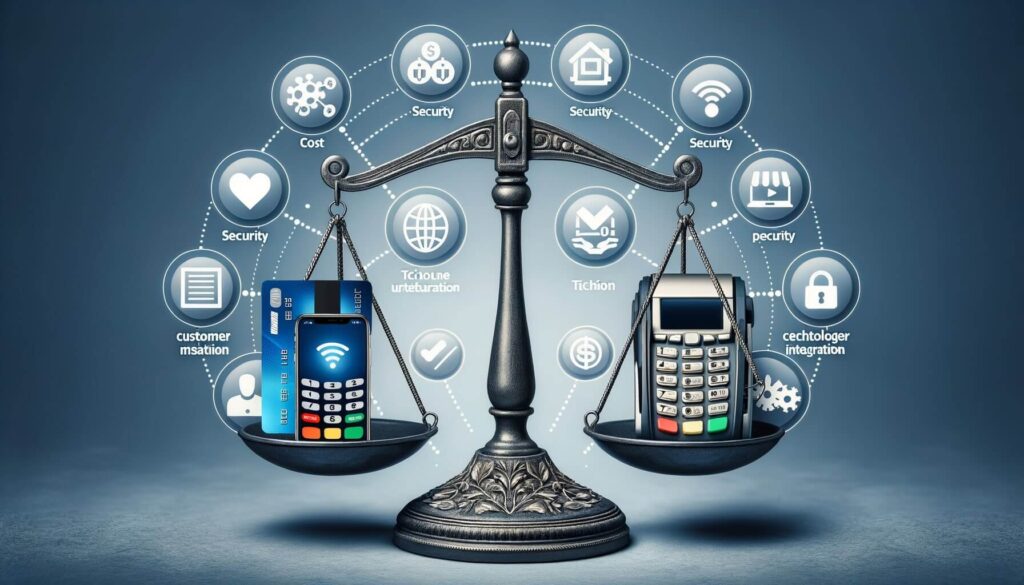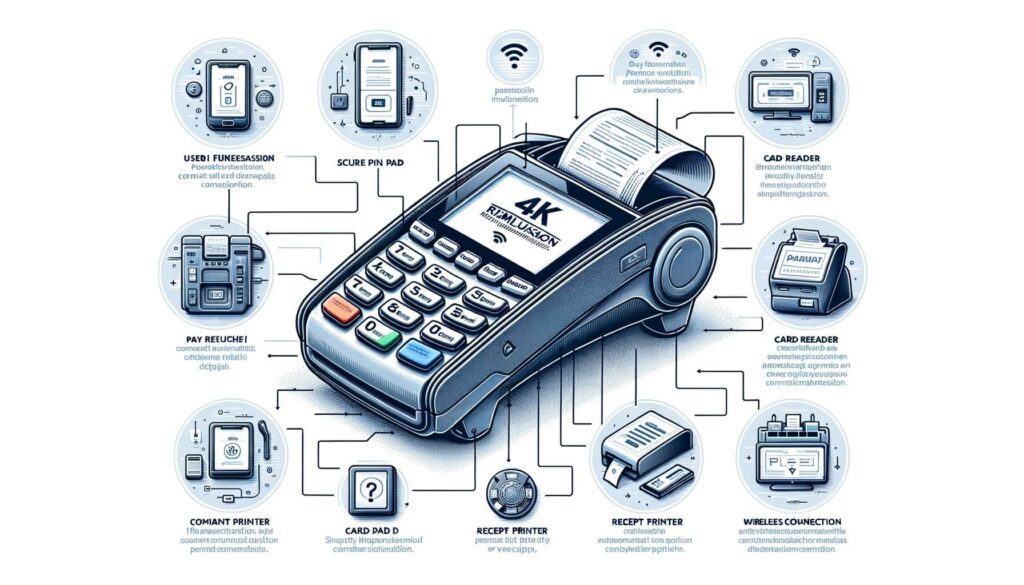
By Mollie Mills April 1, 2025
In today’s digital age, having a reliable and efficient payment terminal is crucial for businesses of all sizes. Whether you run a small retail store or a large e-commerce platform, the ability to accept various forms of payment is essential for attracting and retaining customers.
However, with the multitude of options available in the market, selecting the best payment terminal for your business can be a daunting task. This comprehensive guide aims to simplify the process by providing you with the necessary information to make an informed decision.
Factors to Consider When Selecting a Payment Terminal for Your Business

When choosing a payment terminal, it is important to consider several factors that align with your business needs and goals. The first factor to consider is the type of business you operate. Different industries have unique requirements, and understanding these requirements will help you narrow down your options. For example, a restaurant may require a payment terminal with tip functionality, while a retail store may prioritize a terminal with barcode scanning capabilities.
Another crucial factor to consider is the volume of transactions your business processes. If you have a high volume of transactions, you will need a payment terminal that can handle the load efficiently. Additionally, considering the types of payment methods your customers prefer is essential. Some payment terminals may only accept credit cards and debit cards, while others may support mobile payments such as Apple Pay or Google Pay.
Furthermore, it is important to consider the cost associated with the payment terminal. While it may be tempting to opt for the cheapest option available, it is crucial to evaluate the long-term costs, including transaction fees, maintenance fees, and software updates. Additionally, considering the scalability of the payment terminal is important. As your business grows, you may need to add more terminals or upgrade to a more advanced system, so choosing a provider that offers scalability is essential.
Types of Payment Terminals: Exploring the Options Available

Payment terminals come in various forms, each with its own set of features and functionalities. Understanding the different types of payment terminals will help you make an informed decision based on your business requirements. The most common types of payment terminals include countertop terminals, mobile terminals, and virtual terminals.
Countertop terminals are the traditional payment terminals that are typically found at the checkout counter of retail stores. They are connected to a landline or internet connection and are suitable for businesses with a fixed location. Countertop terminals are known for their reliability and security features, making them a popular choice for businesses that process a high volume of transactions.
Mobile terminals, on the other hand, offer flexibility and mobility. They are portable devices that can be connected to a smartphone or tablet via Bluetooth or Wi-Fi. Mobile terminals are ideal for businesses that operate on-the-go, such as food trucks or delivery services. They allow you to accept payments anywhere, anytime, providing convenience to both you and your customers.
Virtual terminals, also known as online payment gateways, enable businesses to accept payments through their website or over the phone. They are particularly useful for e-commerce businesses that operate solely online. Virtual terminals allow customers to enter their payment information securely, providing a seamless and convenient checkout experience.
Key Features to Look for in a Payment Terminal

When selecting a payment terminal, it is important to consider the key features that will enhance your business operations and improve the customer experience. One of the most important features to look for is compatibility with various payment methods. Ensure that the payment terminal supports all major credit and debit cards, as well as emerging payment methods such as mobile wallets and contactless payments.
Another crucial feature to consider is the ease of use. A user-friendly payment terminal will not only save time but also reduce the chances of errors during transactions. Look for terminals with intuitive interfaces and clear instructions that can be easily understood by both you and your customers. Additionally, consider the speed of transaction processing. A fast and efficient payment terminal will help reduce waiting times and improve customer satisfaction.
Security is another key feature that should not be overlooked. With the increasing prevalence of data breaches and fraud, it is essential to choose a payment terminal that prioritizes security. Look for terminals that comply with the Payment Card Industry Data Security Standard (PCI DSS) and offer encryption and tokenization features to protect sensitive customer information.
Furthermore, consider the reporting and analytics capabilities of the payment terminal. A terminal that provides detailed transaction reports and insights can help you make informed business decisions and identify trends or patterns in customer behavior. Additionally, integration with your existing systems, such as inventory management or customer relationship management (CRM) software, can streamline your operations and provide a seamless experience for both you and your customers.
Evaluating Payment Terminal Security: Protecting Your Customers and Business
Payment terminal security is of utmost importance in today’s digital landscape. With the increasing sophistication of cybercriminals, businesses must prioritize the protection of customer data and safeguard their own financial interests. When evaluating payment terminal security, there are several factors to consider.
First and foremost, ensure that the payment terminal complies with the Payment Card Industry Data Security Standard (PCI DSS). The PCI DSS is a set of security standards established by major credit card companies to protect cardholder data. Compliance with these standards ensures that the payment terminal meets the necessary security requirements and reduces the risk of data breaches.
Encryption is another crucial security feature to look for in a payment terminal. Encryption ensures that sensitive customer information, such as credit card numbers, is securely transmitted and stored. Look for terminals that use end-to-end encryption, which encrypts the data from the moment it is entered into the terminal until it reaches the payment processor. Additionally, consider terminals that offer tokenization, which replaces sensitive data with unique tokens, further enhancing security.
Physical security is equally important when evaluating payment terminals. Look for terminals that have tamper-resistant features, such as secure keypads and anti-tampering mechanisms. Additionally, consider terminals that offer point-to-point encryption (P2PE), which encrypts the data at the point of interaction, minimizing the risk of interception.
Regular software updates are essential for maintaining the security of your payment terminal. Look for providers that offer automatic updates to ensure that your terminal is protected against the latest security threats. Additionally, consider terminals that offer remote monitoring and management capabilities, allowing you to track and control the security of your terminals from a centralized location.
Understanding Payment Processing Fees and Costs Associated with Payment Terminals
When selecting a payment terminal, it is important to consider the fees and costs associated with payment processing. While the upfront cost of the terminal is a significant factor, it is equally important to evaluate the long-term costs, including transaction fees, maintenance fees, and software updates.
Transaction fees are typically charged as a percentage of each transaction or as a flat fee per transaction. The percentage-based fee is known as the discount rate, and it varies depending on the type of card used (credit or debit), the transaction volume, and the average transaction amount. Flat fees, on the other hand, are charged regardless of the transaction amount and are typically more suitable for businesses with low transaction volumes.
Maintenance fees are another cost to consider. These fees cover the ongoing support and maintenance of the payment terminal, including software updates and technical assistance. Some providers may charge a monthly or annual fee, while others may offer these services for free. It is important to evaluate the level of support provided and consider whether the fees are justified based on the value you receive.
Additionally, consider any hidden fees that may be associated with the payment terminal. Some providers may charge additional fees for services such as chargeback handling, PCI compliance, or early termination. It is crucial to carefully review the terms and conditions and ask for clarification on any fees that are not clearly stated.
Integration and Compatibility: Ensuring Seamless Operations with Your Existing Systems
Integration and compatibility are essential considerations when selecting a payment terminal. Ensuring that the terminal seamlessly integrates with your existing systems can streamline your operations and provide a seamless experience for both you and your customers.
If you already have an existing point-of-sale (POS) system, it is important to choose a payment terminal that is compatible with it. Look for terminals that offer integration with popular POS systems, such as Square, Shopify, or Lightspeed. This integration allows for automatic synchronization of sales data, inventory management, and reporting, eliminating the need for manual data entry and reducing the chances of errors.
Additionally, consider the compatibility of the payment terminal with your accounting software. Integration with accounting software, such as QuickBooks or Xero, can simplify the reconciliation process and provide accurate financial reporting. This integration allows for automatic transfer of transaction data, eliminating the need for manual entry and reducing the chances of errors.
Furthermore, consider the compatibility of the payment terminal with your e-commerce platform. If you operate an online store, it is important to choose a payment terminal that seamlessly integrates with your e-commerce platform, such as WooCommerce or Magento. This integration allows for a seamless checkout experience for your customers and ensures that the payment data is securely transmitted.
Choosing the Right Payment Terminal Provider: Evaluating Reputation and Support
Choosing the right payment terminal provider is crucial for the success of your business. The provider you choose should not only offer a reliable and efficient payment terminal but also provide excellent customer support and have a solid reputation in the industry.
When evaluating payment terminal providers, consider their reputation and track record. Look for providers that have been in the industry for a significant amount of time and have a proven track record of delivering quality products and services. Additionally, consider reading customer reviews and testimonials to get an idea of the provider’s reputation and customer satisfaction levels.
Customer support is another important factor to consider. Look for providers that offer 24/7 customer support, as issues with payment terminals can arise at any time. Additionally, consider the level of support provided, including technical assistance, training, and troubleshooting. A provider that offers comprehensive support will ensure that any issues or concerns are addressed promptly, minimizing downtime and disruptions to your business.
Furthermore, consider the provider’s ability to scale with your business. As your business grows, you may need to add more payment terminals or upgrade to a more advanced system. Choosing a provider that offers scalability will save you the hassle of switching providers in the future and ensure a seamless transition as your business expands.
Common FAQs about Payment Terminals: Addressing Your Concerns
Q: What is a payment terminal?
A: A payment terminal is a device that allows businesses to accept various forms of payment, such as credit and debit cards, mobile payments, and contactless payments. It securely captures and processes payment information, facilitating transactions between businesses and customers.
Q: How do payment terminals work?
A: Payment terminals work by securely capturing and transmitting payment information from the customer to the payment processor. When a customer makes a payment, they insert or swipe their card, enter their PIN or sign for verification, and the terminal securely transmits the payment data to the payment processor for authorization. Once the payment is authorized, the terminal prints a receipt for the customer.
Q: What types of payment methods can payment terminals accept?
A: Payment terminals can accept various forms of payment, including credit and debit cards, mobile payments such as Apple Pay or Google Pay, contactless payments using Near Field Communication (NFC) technology, and even traditional checks.
Q: How do I choose the right payment terminal for my business?
A: To choose the right payment terminal for your business, consider factors such as the type of business you operate, the volume of transactions you process, the types of payment methods your customers prefer, the cost associated with the terminal, and the scalability and compatibility with your existing systems.
Q: How secure are payment terminals?
A: Payment terminals prioritize security by complying with the Payment Card Industry Data Security Standard (PCI DSS) and offering encryption and tokenization features. Additionally, physical security features such as tamper-resistant keypads and anti-tampering mechanisms are implemented to protect against fraud and data breaches.
Q: What are the costs associated with payment terminals?
A: The costs associated with payment terminals include the upfront cost of the terminal, transaction fees, maintenance fees, and software updates. It is important to evaluate the long-term costs and consider any hidden fees that may be associated with the terminal.
Conclusion
Selecting the best payment terminal for your business is a crucial decision that can significantly impact your operations and customer experience. By understanding the importance of choosing the right payment terminal, considering factors such as the type of business, transaction volume, payment methods, and costs, and evaluating key features such as compatibility, security, and integration, you can make an informed decision that aligns with your business needs and goals.
Remember to prioritize security by choosing a payment terminal that complies with the Payment Card Industry Data Security Standard (PCI DSS) and offers encryption and tokenization features. Additionally, consider the reputation and support provided by the payment terminal provider to ensure a seamless experience and prompt resolution of any issues or concerns.
By following these guidelines and considering the common FAQs addressed in this article, you can confidently select the best payment terminal for your business, enhancing your operations, protecting your customers, and ultimately driving growth and success.